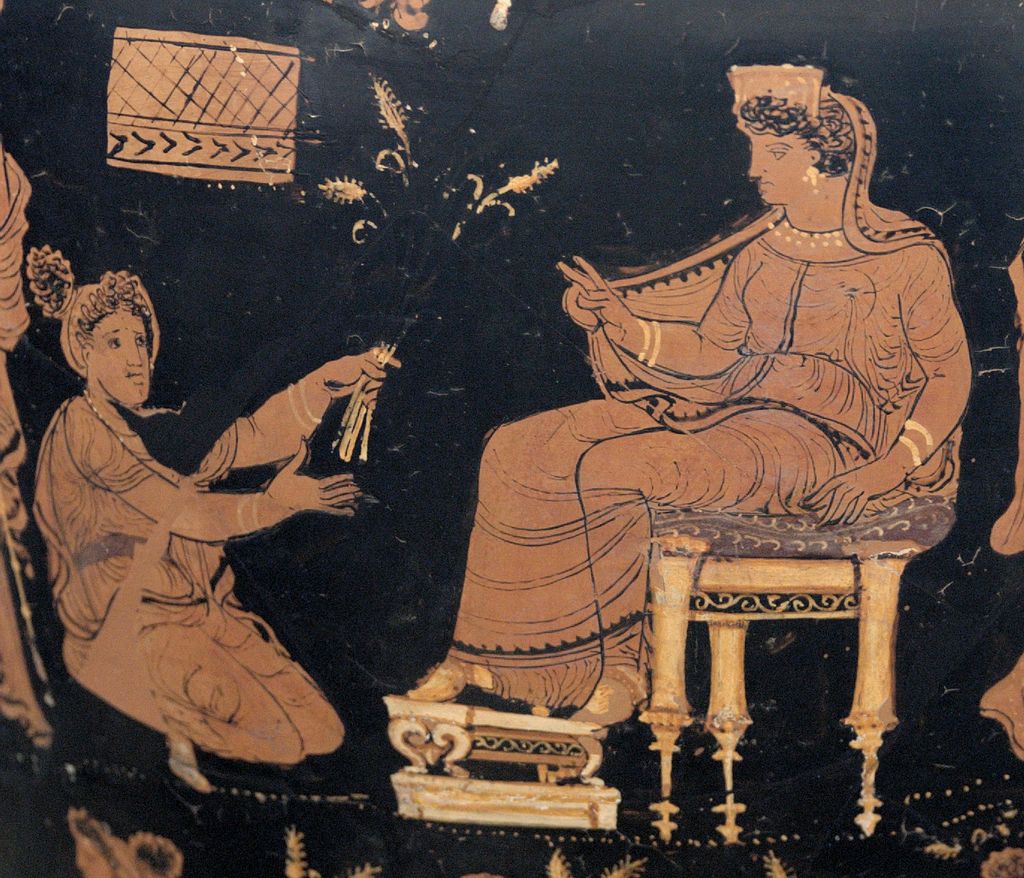Bread was originally a mixture of coarsely ground flour and water. With time, bread dough was enriched with yeast although, in many parts of the world, unleavened breads were never abandoned. Leaveners, both natural and hand-made, were described in Naturalis Historiae by Pliny the Elder, who lived in the 1st century AD. This huge work consisted of 37 volumes with sections on geology, astronomy, zoology, botany, mineralogy & natural healing. Book 18 was dedicated to agricultural methods and products, including bread; chapter 26, in particular, analyzed the old and new methods of leavening bread dough.
According to Pliny's description, bread could be leavened with either brewer's yeast or sourdough starter. 'Brewer's yeast' was made by kneading ground millet with freshly crushed grape juice; the mixture could be saved for up to a year or kneaded with fine wheat-bran into cakes that were dried and stored for later use. To revive that yeast, a baker soaked the cakes in water, added fine spelt flour, boiled the mixture and kneaded this leaven with flour. The method had been established by the Greeks, who used 1 part leavener for 4 parts flour.
The disadvantage of 'brewer's yeast' was that it could only be made at the time of vintage. That's why bakers developed another type of leavener. To make this yeast, they mixed barley and water into cakes that were afterwards baked and closed in vessels until they turned sour. When needed for bread, they were soaked in water. Barley bread, in particular, was leavened with yeast made from chickpea flour and the ratio was approximately 1 part leavener for 5 parts flour.
During Pliny's time, sourdough bread was the most popular choice. The way to make it was this: "nunc
fermentum fit ex ipsa farina, quae subigitur, priusquam addatur sal,
ad pultis modum decocta et relicta, donec acescat. vulgo vero nec
suffervefaciunt, sed tantum pridie adservata materia utuntur,
palamque est naturam acore fermentari, sicut evalidiora esse corpora,
quae fermentato pane alantur, quippe cum apud veteres ponderosissimo
cuique tritico praecipua salubritas perhibita sit." Which means that in order to leaven the bread, they would make a sourdough starter by mixing flour and water, boil to the consistency of porridge and leave to stand until it turned sour. Most bakers would save a little dough for the next batch and make a new sourdough starter by adding water etc. Pliny concluded that sourdough starter yielded a more wholesome bread and that people who ate fermented bread and wholegrain bread generally enjoyed better overall health.

FERMENTED & WHOLEGRAIN RYE BREAD - with added baker's yeast
This recipe is slightly adapted from The Finnish Book by Beatrice Ojakangas. Fermentation period for the sourdough starter (which in the original version is made with 1/2 cup flour and 1/2 cup milk) is between 3-4 days the first time and 20-40 hours the second but it really depends on the type of flour used, the temperature and humidity of your kitchen, the way you handle the dough and so many other things. However, the amount of ingredients and the first stages of mixing and feeding the starter are very important, that's why it's best to use the guidelines.
I n g r e d i e n t s
for the starter:
1/2 cup wholegrain rye flour
1/2 cup milk
to feed the starter:
2 cups lukewarm water
1 cup wholegrain rye flour
for the bread:
3 1/2 cups wholegrain rye flour
3 - 3 1/2 cups bread flour
1 sachet dry active yeast
2tsp salt
M e t h o d
To make the starter: Mix the flour and milk in a bowl. Cover and leave in a warm place for 3 days. (Use a lidded glass jar or a bowl that you will seal with cling film or a towel and rubber elastics.) To feed the starter: The mixture will have formed bubbles and developed a pleasantly sour aroma. If not, cover and leave for another day. Otherwise, feed with 2 cups lukewarm water and 1 cup flour. Cover and leave for 24-36 hours, depending on how sour you like your bread. To make the bread: 1. Combine the rye flour, 3 cups of the bread flour, the yeast and the salt in a bowl. Add the starter and mix thoroughly. Cover with a towel and leave to stand for 15-30 minutes. 2. Place on a table and knead for 10 minutes, adding more bread flour if necessary. Shape into a ball, return to the bowl, cover and leave to rise for 1 1/2 - 2 hours or until doubled in bulk. 3. Punch down and knead for 1-2 minutes. (Don't forget to save a piece of the dough for the next batch.) Then shape into loaves, place on a baking sheet that's lined with parchment paper, cover with a towel and leave to rise until nearly doubled in bulk. In the mean time, preheat the oven to 210-220C. 4. Score with a knife or prick with a fork and bake for 20 minutes. Lower the temperature to 190-200C and bake for another 15 minutes or until there is a hollow sound when you knock the base of the loaves with your fingers. 5. Leave to cool on wire racks.
N o t e
Keep the dough for the next batch in the refrigerator. To use again, start the process by mixing with equal parts of flour and water.


Comments